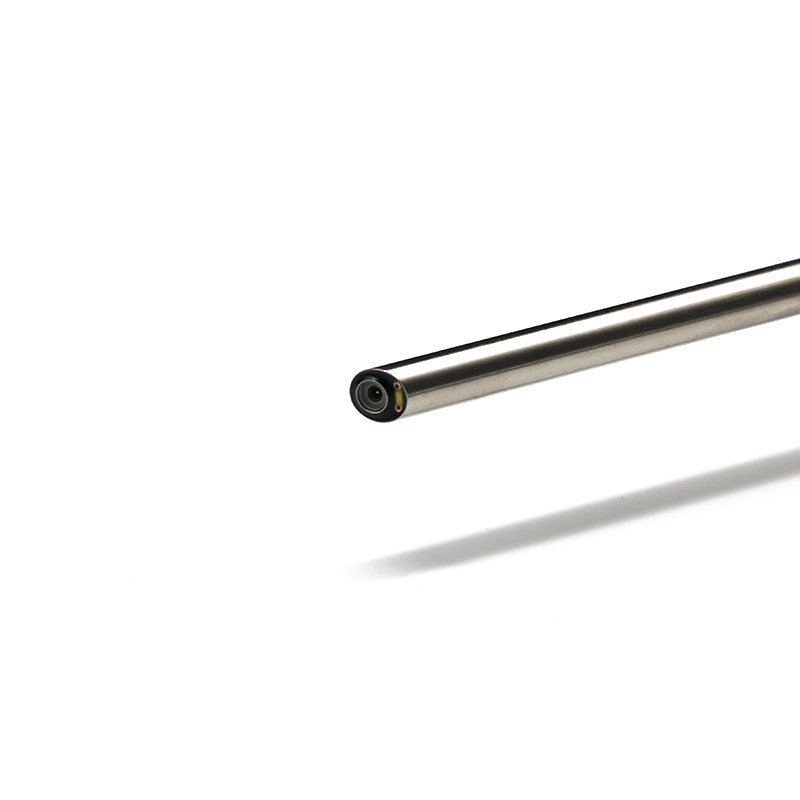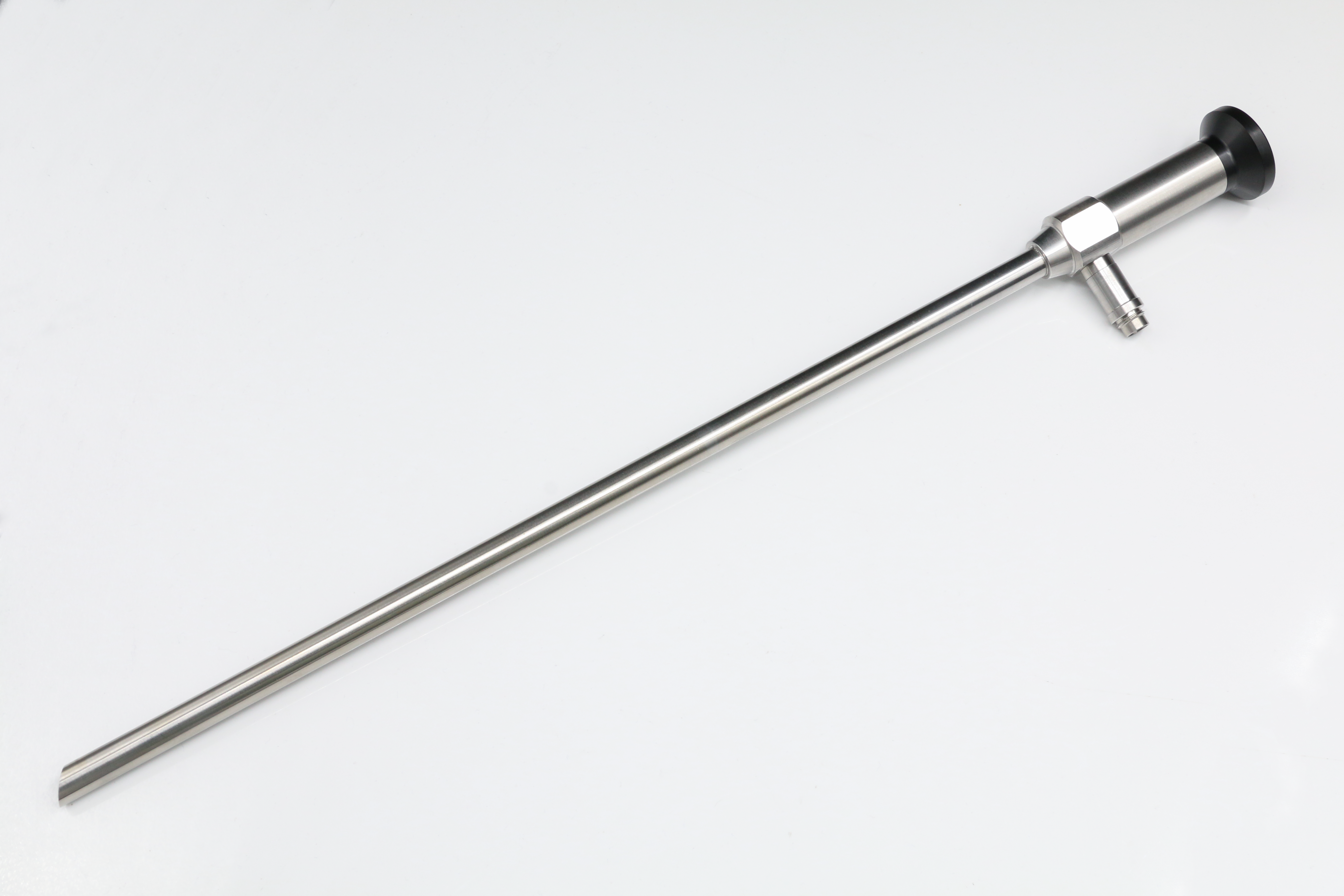Views: 0 Author: Site Editor Publish Time: 2025-04-30 Origin: Site











In the realm of endoscopic surgery, particularly within the general surgery department, esophagoscopy plays a vital role in diagnosing and managing conditions affecting the esophagus. There are two principal types of esophagoscopy: flexible esophagoscopy and rigid esophagoscopy. Understanding the key differences between these techniques is critical for healthcare professionals involved in surgical examination and medical operations. Among the tools used in these procedures, the Rigid Endoscope stands out as a central device, particularly in more invasive or controlled diagnostic scenarios.
This comprehensive guide will delve into the fundamental distinctions between flexible and rigid esophagoscopy, analyze the use of various rigid endoscope models like the 3mm rigid endoscope, 10 mm rigid endoscope, 0 degree rigid endoscope, 30 degree rigid endoscope, and 70 degree rigid endoscope, and offer insights into modern trends influencing the field of endoscopic procedures.
Esophagoscopy is a medical procedure that allows doctors to visually examine the interior of the esophagus. It can be performed using either a flexible or a rigid instrument. Both methods serve different clinical purposes, depending on the condition being treated or diagnosed.
Flexible esophagoscopy uses a thin, flexible tube equipped with a camera and light source, allowing it to maneuver easily through the esophagus.
Rigid esophagoscopy, on the other hand, employs a straight, inflexible tube – the Rigid Endoscope – which provides high-definition, stable imaging and better control during certain types of procedures.
The Rigid Endoscope is a device commonly used in surgical operations where precision and image clarity are paramount. These scopes come in various diameters and viewing angles, each serving specific surgical needs.
| Endoscope Type | Description | Application in Surgery |
|---|---|---|
| 3mm rigid endoscope | Ultra-thin rigid scope, ideal for pediatric or narrow lumen access. | Pediatric esophagoscopy, fine structure exam |
| 10 mm rigid endoscope | Standard size offering superior image resolution and light transmission. | General and advanced endoscopic surgery |
| 0 degree rigid endoscope | Straight-on viewing; best for direct line-of-sight procedures. | Foreign body removal, initial diagnostic views |
| 30 degree rigid endoscope | Offers an angled view for enhanced peripheral visualization. | Tumor assessment, complex lesion access |
| 70 degree rigid endoscope | Ideal for wide-angle viewing in hard-to-reach regions. | Comprehensive surgical examination |
These scopes are used in conjunction with advanced light sources and HD cameras to maximize diagnostic accuracy during medical operations.

To clarify the distinctions between these two approaches, the following table outlines a direct comparison of key features:
| Feature | Flexible Esophagoscopy | Rigid Esophagoscopy |
|---|---|---|
| Instrument Flexibility | Highly flexible, maneuverable | Completely rigid and straight |
| Patient Comfort | Generally more comfortable, can be done under sedation | Requires general anesthesia due to invasiveness |
| Visualization Angle | Adjustable with angulation control | Fixed angles (0°, 30°, 70°) available |
| Image Quality | Moderate to high (depends on fiber optics) | Very high-definition, stable view |
| Procedure Type | Diagnostic and light therapeutic uses | Preferred for complex surgeries and object retrieval |
| Size Options | Typically small diameter | Includes 3mm and 10 mm rigid endoscope variations |
| Setup Complexity | Quick and simple | Requires OR setup and support staff |
| Safety and Risk Profile | Lower risk of injury | Higher risk due to rigidity and need for anesthesia |
| Industry Usage | Outpatient, primary diagnostic | Specialized general surgery department procedures |
While flexible esophagoscopy is often the first-line method for basic diagnostics, rigid esophagoscopy remains essential in several surgical operations, especially when a stable and wide field of view is needed.
Foreign Body Retrieval: A rigid endoscope offers superior control and visualization for the removal of ingested items, especially metallic or sharp objects.
Tumor Resection and Biopsy: Rigid scopes like the 30 degree rigid endoscope and 70 degree rigid endoscope are ideal for accessing and viewing tumors from varied angles.
Esophageal Dilation: During strictures or blockages, the 10 mm rigid endoscope facilitates safer mechanical dilation.
Bleeding Control: Stability of a rigid endoscope supports precise cauterization or hemostasis.
Surgical Staging: High-definition viewing through the 0 degree rigid endoscope is useful in assessing disease spread or invasion in endoscopic surgery.

Exceptional image quality and lighting.
Direct, controlled instrumentation.
Ability to handle complex procedures in a controlled OR setting.
Requires general anesthesia.
Less patient-friendly due to discomfort.
Not suitable for fragile patients or those with severe cervical spine issues.
Recent advancements in Rigid Endoscope technology have significantly expanded its functionality. Some trends include:
Miniaturization: With demand for less invasive procedures, devices like the 3mm rigid endoscope are seeing higher usage in specialized and pediatric cases.
Integrated Imaging Systems: Coupling rigid endoscopes with 4K UHD or fluorescence imaging improves diagnostic accuracy.
Disposable Rigid Endoscopes: Single-use scopes are emerging, especially for infectious control and rapid deployment.
Enhanced Angled Lenses: The popularity of the 30 degree rigid endoscope and 70 degree rigid endoscope continues to grow due to their ability to visualize around anatomical bends.
The choice between flexible and rigid esophagoscopy depends on several clinical considerations:
Patient Condition: Older or high-risk patients may benefit from the less invasive flexible scope.
Procedure Type: For complex surgeries or foreign body removal, a rigid endoscope is preferred.
Image Requirement: When superior image quality is non-negotiable, rigid endoscopy is the go-to choice.
Setting and Resources: Outpatient clinics may favor flexible scopes, whereas hospitals with OR access can utilize 10 mm rigid endoscope setups effectively.
According to recent studies on endoscopic surgery trends in the U.S. and Europe:
Over 65% of general surgery departments still rely on rigid endoscopes for high-risk esophageal procedures.
Usage of 30 degree rigid endoscopes has increased by 25% in tumor-related operations over the last 5 years.
The 3mm rigid endoscope has seen adoption growth in pediatric surgery by over 40% annually due to its size advantage.
Surgeons report a 30% increase in procedural success rate when utilizing 70 degree rigid endoscopes for obstructed field visualizations.
These trends underline the indispensable role of rigid endoscopy in complex surgical examination and reinforce the importance of choosing the right type of rigid endoscope based on procedure needs.
Q1: Is rigid esophagoscopy safer than flexible esophagoscopy?
A: Rigid esophagoscopy is not inherently safer; it is more invasive and requires anesthesia. However, it provides better control and visualization in complex procedures, which can reduce procedural errors in those cases.
Q2: What is the purpose of using different angles in rigid endoscopes like 0°, 30°, or 70°?
A: The viewing angle determines the field of view and the direction of observation. A 0 degree rigid endoscope is for straight views, 30 degree rigid endoscope helps look around corners, and 70 degree rigid endoscope provides a wide lateral view.
Q3: Which industries commonly use rigid endoscopes?
A: Rigid endoscopes are commonly used in medical operations, general surgery departments, surgical examination, and endoscopic surgery settings, especially in hospitals and specialized surgical centers.
Q4: When would a surgeon choose a 3mm rigid endoscope over a 10 mm rigid endoscope?
A: A 3mm rigid endoscope is preferred for delicate procedures, narrow passageways, or pediatric patients, while a 10 mm rigid endoscope is used for standard adult procedures requiring higher resolution.
Q5: Are there any innovations on the horizon for rigid endoscopes?
A: Yes. New technologies include robot-assisted positioning, wireless scopes, and AI-based real-time tissue analysis, all integrated with rigid endoscope systems for smarter diagnostics.
In conclusion, understanding the difference between flexible and rigid esophagoscopy is essential for medical professionals choosing the right diagnostic or therapeutic path. The Rigid Endoscope remains a vital instrument, particularly in cases that demand precision, control, and high-definition visualization.
With various models like the 3mm rigid endoscope, 10 mm rigid endoscope, 0 degree rigid endoscope, 30 degree rigid endoscope, and 70 degree rigid endoscope, these tools serve a wide spectrum of applications across medical operations, general surgery departments, and endoscopic surgeries.
As technology continues to evolve, the rigid endoscope will remain central in advanced esophageal procedures, making it crucial for surgical teams to stay updated with the latest innovations and applications.
